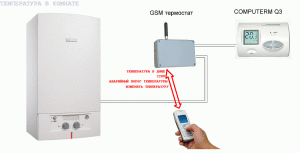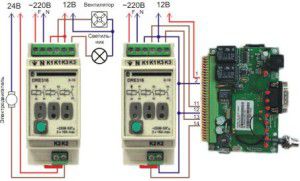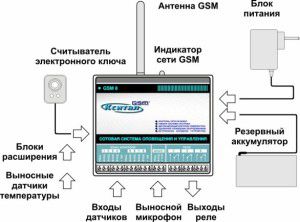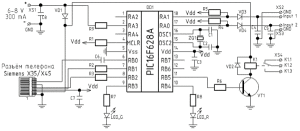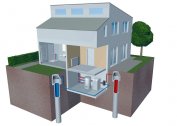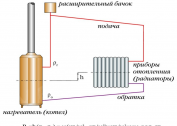Manual heating control is not always effective for its operation. Even automatic thermostats are only able to maintain the desired temperature, and programmers will only perform the functions laid down in them. But what to do if it is necessary to obtain data on the operation of heating remotely and also change its parameters? For the practical implementation of this, GSM heating control is needed: modules for boilers, system control and other additional features.
The principle of remote heating control
In essence, the GSM controller for heating is a universal control element. Usually it is part of the so-called "smart home", where most of the familiar functions are automated.
What is the main task of this control module? First of all, the transfer of objective user information via GSM communication and the adjustment of heating parameters in the same mode. To do this, it is not enough to have only a GSM controller for heating control. In addition to this device, all other equipment must be adapted for connection to the controller. As a result, after installation, the following possibilities for controlling the heating system in the house will appear:
- Remote receipt of reports on the status of the system in automatic mode or upon request;
- GSM heating control - the ability to change the parameters of the boiler or adjust the degree of heating of radiators;
- Connection to additional control systems - fire fighting, security, etc.
The latter function allows you to be “in the know” even at a distance of hundreds of kiloliters. In fact, the user gets a universal remote control. However, do not place too high hopes on the GSM heating control module. Only expensive models can signal leaks in pipes. You also need to take care of the correct pre-setting - alerts can only be received when certain factors influence. A GSM alarm for heating will give a signal only when the system parameters go beyond the set limits.
In most cases, you can configure the frequency of GSM alarm alerts about the state of heating. You can do this directly in the module settings.
Feasibility of installing GSM heating control
Keep in mind that remote control of GSM heating is expensive. The average cost of such a complex can be from 18 to 32 thousand rubles. Therefore, before purchasing, you need to analyze - do you need such a control system?
Most often, it is installed in private homes, industrial and commercial premises with an unstable presence of people. In this case, the heating system must maintain the desired temperature level. Those. the user should be able to change the current values of the heating medium at any time. Also, the heating control via GSM must timely send a message about the occurrence of possible malfunctions or an unexpected deviation of the water temperature from the norm.
In practice, installing a GSM controller for heating is relevant in the following cases:
- The need to change system parameters using SMS messages or installed mobile software;
- Remote monitoring of the state of heating.
For a private home, such functions are not basic or in demand.Therefore, the installation of a GSM controller for heating control can be replaced by installing a similar device - a programmer. In fact, this is also an electronic control unit with heating parameters, but without the GSM function.
When traveling abroad for remote control of heating via GSM you need to enable roaming. Otherwise, SMS will not come. The way out of this situation is to entrust the heating control to friends or relatives by adding their mobile number to the module newsletter.
Functionality and equipment of remote control systems
For the consumer, two main characteristics of remote heating control systems are important - cost and features. They are interconnected. Often the wider the functionality of the device, the more expensive it costs. To analyze a particular model designed for GSM heating control, you need to find out its characteristics.
The system of remote adjustment of parameters consists of several units - electronic control and GSM transmitter. They can be in one case or connected to each other via cables. The latter is preferable, since in this way you can subsequently establish the perfect model of the control unit, leaving the old transmitter.
The choice of the type of GSM heating control module should be based on an analysis of its capabilities. The minimum set should include the following functions:
- Connection to remote temperature and pressure sensors. The number of points should be at least 5, and one of them is located on the street;
- Switching with the boiler control unit to control its operation modes and measuring the current system parameters;
- Setting alarm signals depending on the readings of heating. The minimum set includes maintaining the temperature of the coolant at the desired level, the values of which are set via SMS message, and an alarm about the excess (decrease) in the degree of heating of water.
The advanced functionality of GSM signaling for heating includes connection to auxiliary relays. With their help, it is possible to regulate the work of not only the boiler, but also the water floor heating system, as well as heating radiators. In addition, it is desirable that the notification system duplicates messages on several mobile phones. This is true for a long-term absence in the house and the transfer of remote heating control to third parties. Most often, this is used when traveling abroad.
Before installing the remote control module, you need to know the warranty conditions. They can only be valid for installation by company specialists or their representatives.
Installation of GSM heating modules
For the correct installation of remote heating control with a GSM module, it is best to invite specialists. But if you even have small skills in working with electronic devices and reading the simplest electrical circuits, you can do it yourself.
The specificity of the installation is the correct connection of the control circuits to the boiler, sensors and other elements of the heating system. The manufacturer’s instructions always indicate equipment requirements and switching parameters. For proper heating control via GSM, the following general requirements must be met:
- Choose a mounting location for the module. This should be a heated room with optimal humidity;
- The signal from the GSM transmitter should not be reduced due to reinforced concrete overlap. Therefore, it is better not to install the module in the basement;
- Provide an emergency power supply. When the power is turned off, the GSM controller will not be able to monitor the state of heating. Most often, an uninterruptible power supply unit of medium power is purchased for this;
- Connection to a separate power line through an RCD.This will protect the controller with GSM transmission to control heating from overloads.
An important factor is the convenient and functional software for GSM monitoring of the heating operation. Most often, manufacturers offer their own versions, adapted for smartphone operating systems. For best performance, it is recommended that you constantly monitor updates.
Is it possible to make GSM heating control with your own hands - from the module for boilers to the control of the entire system? With due diligence, this is possible. But the quality of the device, most likely will not meet the standards. Therefore, it is best to purchase factory models.
As an example, you can see the capabilities of the Kostrzewa GSM heating control module:
